*NURSING > STUDY GUIDE > POST - FINAL EXAM GUIDE 601 ALL ANSWERS 100% SOLVED &GRADED FALL -2021 LATEST GUARANTEED GRADE A+ (All)
POST - FINAL EXAM GUIDE 601 ALL ANSWERS 100% SOLVED &GRADED FALL -2021 LATEST GUARANTEED GRADE A+
Document Content and Description Below
Glucose Metabolism Disorders Type 1 Diabetes 2 types 1. Immune mediated (type 1A) 90% of cases ● Caused by autoimmune destruction of insulin-producing pancreatic beta islet cells ● The trigg... ering factor in the development of type 1 DM is thought to be an infection or toxic insult in persons with a genetic predisposition. ● The most commonly identified infectious agents are congenital rubella, others include; Coxsackie B4 virus, cytomegalovirus, adenovirus, and mumps virus. ● Associated with an increased incidence of other autoimmune disorders, including thyroid, adrenal, and gonadal insufficiency ● Progressive beta cell destruction remains the hallmark of type 1 DM, with hyperglycemia typically developing once 80% to 90% of a patient’s beta cells have been destroyed 2. Idiopathic (type 1B) Clinical Presentation ● The majority of patients seek medical attention due to symptoms related to hyperglycemia, with the initial diagnosis in children often being made when patients present in frank diabetic ketoacidosis (DKA) o Signs of severe ketosis known as diabetic ketoacidosis (DKA) include extreme fatigue, abnormal cramping, and alterations in breathing pattern. In addition, a telltale sign of ketosis is halitosis, which smells like a combination of nail polish (acetone) and rotting fruit. In contrast, hyperosmolar hyperglycemic state (HHS) is a serious form of nonketotic acidosis resulting from prolonged hyperglycemia that is less common than DKA but has a higher mortality rate. HHS is seen most frequently in adults who have a restriction in fluid intake for some reason, such as a concurrent illness, impaired physical function, or reduced cognition. ● The classic symptoms of type 1 DM are polyuria (increased urination), polydipsia (increased fluid intake due to excessive thirst), nocturnal enuresis, polyphagia with paradoxical weight loss (due to reduced glucose metabolism, despite increased consumption), visual changes (especially blurred vision), and eventual fatigue, weakness, and anorexia. Screening: ● The American Diabetes Association (ADA) does not recommend screening for type 1 DM in apparently healthy individuals who have no risk factors for this disorder. However, if suspected, point-of-care testing can be accomplished by utilizing a portable blood glucose monitor to determine capillary blood glucose level as a random plasma glucose measurement taken without regard to the timing of a patient’s last meal. If elevated, the patient’s urine should be tested for ketones and additional plasma glucose testing should be initiated. Diagnostic criteria: • Glycosylated hemoglobin (A1C) of 6.5% or higher • Symptoms of diabetes (e.g., polyuria, polydipsia, weight loss) plus a random plasma glucose level of 200 mg/dL or higher • Fasting plasma glucose level of 126 mg/dL or higher (following 8 hours of no caloric intake) • Two-hour plasma glucose level of 200 mg/dL or higher during an oral glucose tolerance test (OGTT) with a 75-g glucose load *The first three criteria listed above should be confirmed by repeat testing (preferably with the same test) without delay, except in the setting of unequivocal hyperglycemia with acute metabolic decompensation Patients with borderline glucose intolerance at risk for developing type 1 DM or those with suspected LADA can be tested for antibodies against GAD, insulin, tyrosine phosphatases (e.g., IA-2), or zinc transporters (e.g., ZnT8), as these autoantibodies help differentiate (latent autoimmune diabetes in adults (LADA) from type 2 DM. If two or more of these antibody classes are positive in the setting of diagnostic hyperglycemia, then the diagnosis of type 1 DM is confirmed. However, such antibodies are not a diagnostic requirement for type 1 DM. Treatment: Patient with type 1A NEED exogenous insulin to survive. • The initial goal of treatment for type 1 DM is to normalize the elevated blood glucose level. This is best accomplished by intensive insulin regimens to achieve the following goals: o Plasma glucose levels of 80 to 130 mg/dL before meals o Peak postprandial (1–2 hours after the beginning of a meal) glucose levels of less than 180 mg/dL o A1C below 7% for adults with type 1 DM Complications (with MGMT): • Retinopathy: The ADA recommends that adults with type 1 DM should be seen by an ophthalmologist or optometrist and have a dilated comprehensive eye examination within the first 5 years of diagnosis. If there is no retinopathy at the first evaluation, an eye examination should be done every 2 years. If retinopathy is detected, a full eye examination should be done by an ophthalmologist or optometrist at least annually. • Hyperlipidemia: Adults with type 1 DM should be tested annually for lipid disorders with a complete fasting lipid profile, given the increased risk in these individuals for CAD. • Nephropathy: The ADA recommends assessing urinary albumin to monitor for developing nephropathy at least once a year in patients with type 1 DM. Screening with a spot urinary albumin-to-creatinine ratio (UACR) and an estimated glomerular filtration (eGFR) rate should be done after a disease duration of 5 years or sooner if the patient has hypertension. Persistent albuminuria (greater than 30 mg/g of creatinine) is the earliest stage of diabetic nephropathy, and overt nephropathy with albuminuria equal to or greater than 300 mg/g creatinine will develop over a period of 10 to 15 years in approximately 80% of patients with microalbuminuria, many of whom will also present with hypertension • Hypertension: In a patient with type 1 DM, hypertension is often a manifestation of nephropathy. Control of hypertension has been demonstrated to reduce the rate of progression of nephropathy and to reduce the complications of CVD. ADA guidelines recommend that the goal for blood pressure control in nonpregnant adults is to maintain the systolic blood pressure at less than 140/90. Patients at high risk for CVD may target a lower goal of 130/80 mm Hg, if this can be achieved without significant side effects. Initial treatment for diabetic patients with hypertension should include lifestyle management and, if medication is required, an ACEI or ARB should be started, unless contraindicated, such as in pregnancy. • Macrovascular disease: Diabetic patients are at risk for developing macrovascular complications including stroke, PVD, CAD, and other forms of CVD. Daily intake of aspirin has been shown to reduce cardiovascular events in patients with DM. Patients with disabling claudication or nonhealing ulcers require a vascular consultation for their PVD. • Neuropathy: One-half of the patients with hyperglycemia extending over 15 years will develop some degree of neuropathy. Foot ulcers and related problems resulting from the decreased peripheral sensation in diabetic patients with significant neuropathy are a major cause of morbidity in DM, with potentially life-threatening consequences if such infections spread systemically. Peripheral neuropathy may result in pain, loss of sensation, and muscle weakness. The feet and ankles are affected most often, but many patients also complain of pain in the knees and upper extremities. A thorough initial foot examination followed by annual follow-up foot examinations are indicated in asymptomatic patients. A 10-g Semmes-Weinstein monofilament should be used to assess sensation at least annually. • Hypoglycemia: Hypoglycemia is a common occurrence in patients with type 1 DM and occurs for a variety of reasons: excessive exogenous insulin, missed meals or inadequate food intake, excessive exercise, alcohol ingestion, drug interactions, or decreases in liver or kidney function. Signs and symptoms include diaphoresis, tachycardia, hunger, shakiness, altered mentation (ranging from an inability to concentrate to frank coma), slurred speech, and seizures. o The goal of treatment is to normalize the plasma glucose level promptly. If the patient is conscious and able to swallow, this is best accomplished by the prompt ingestion of glucose or carbohydrate-containing food with a high glycemic index for rapid absorption. Pure glucose is the treatment of choice according to the ADA, but any carbohydrate that can increase the blood glucose level can be given. Food with significant fat content may delay the glycemic response. Examples of appropriate foods include one-half cup of any fruit juice (with no additional sugar added), 6 ounces of regular soda (not diet or sugarless), 1 cup of milk, or glucose tablets. Candy (other than chocolate) can be used in dire situations but is not recommended when other sources of sugar are available. Blood glucose should be checked 15 minutes after treatment, and additional carbohydrates should be given if the blood glucose remains less than 70 mg/dL. For severe hypoglycemia in a patient who is unconscious or unable to swallow, 1 mg of glucagon can be given subcutaneously to mobilize hepatic glucose stores. An alternative treatment in the inpatient setting is to administer 50 mL of a 50% dextrose solution intravenously. o The Somogyi effect is a unique combination in which a diabetic patient develops hypoglycemia during the night with rebound hyperglycemia in the morning Lifestyle modifications: • Diet: The goals of nutritional therapy are to maintain normal blood glucose levels, prevent hypoglycemia, maintain normal serum lipid levels, attain or main [Show More]
Last updated: 1 year ago
Preview 1 out of 63 pages
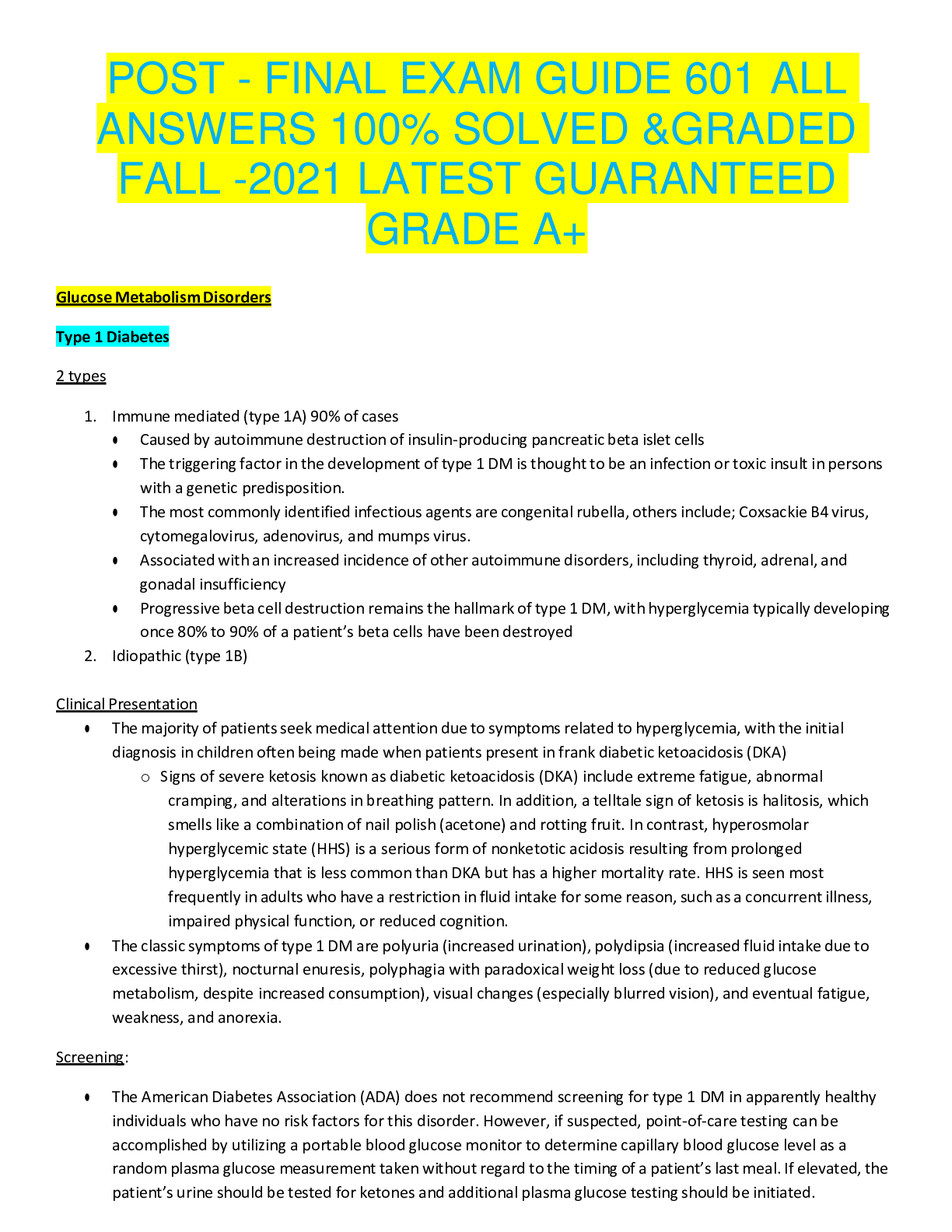
Reviews( 0 )
Document information
Connected school, study & course
About the document
Uploaded On
Oct 21, 2021
Number of pages
63
Written in
Additional information
This document has been written for:
Uploaded
Oct 21, 2021
Downloads
0
Views
44

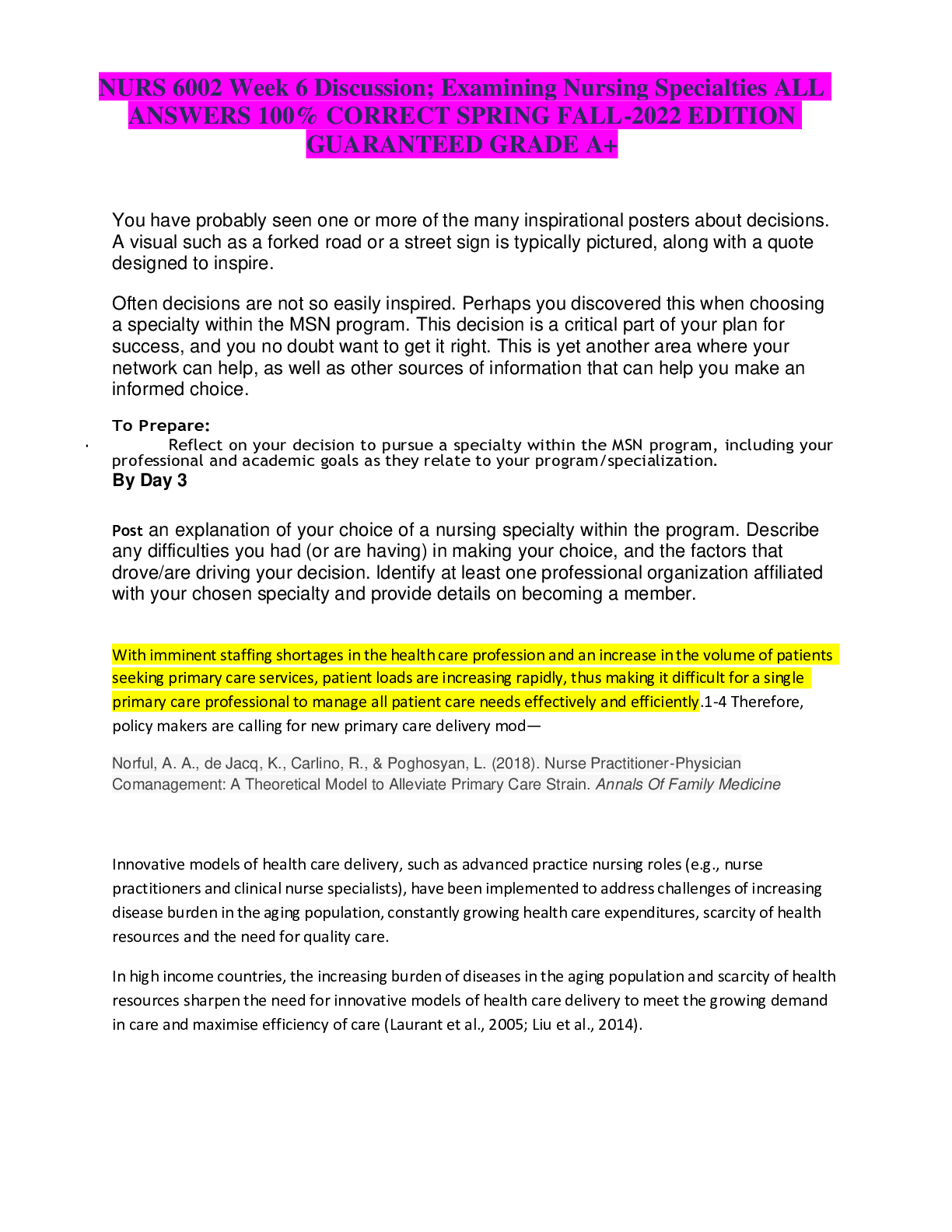
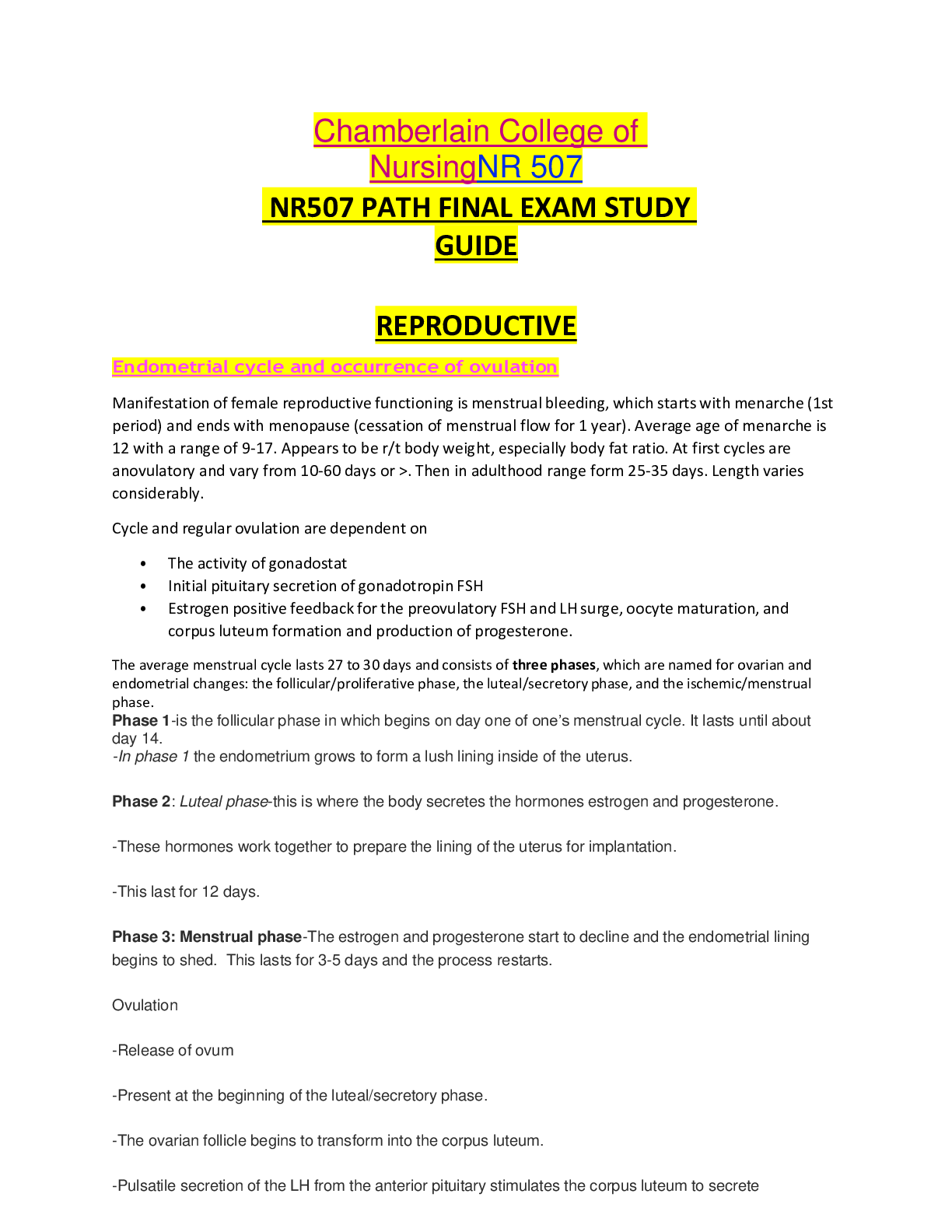
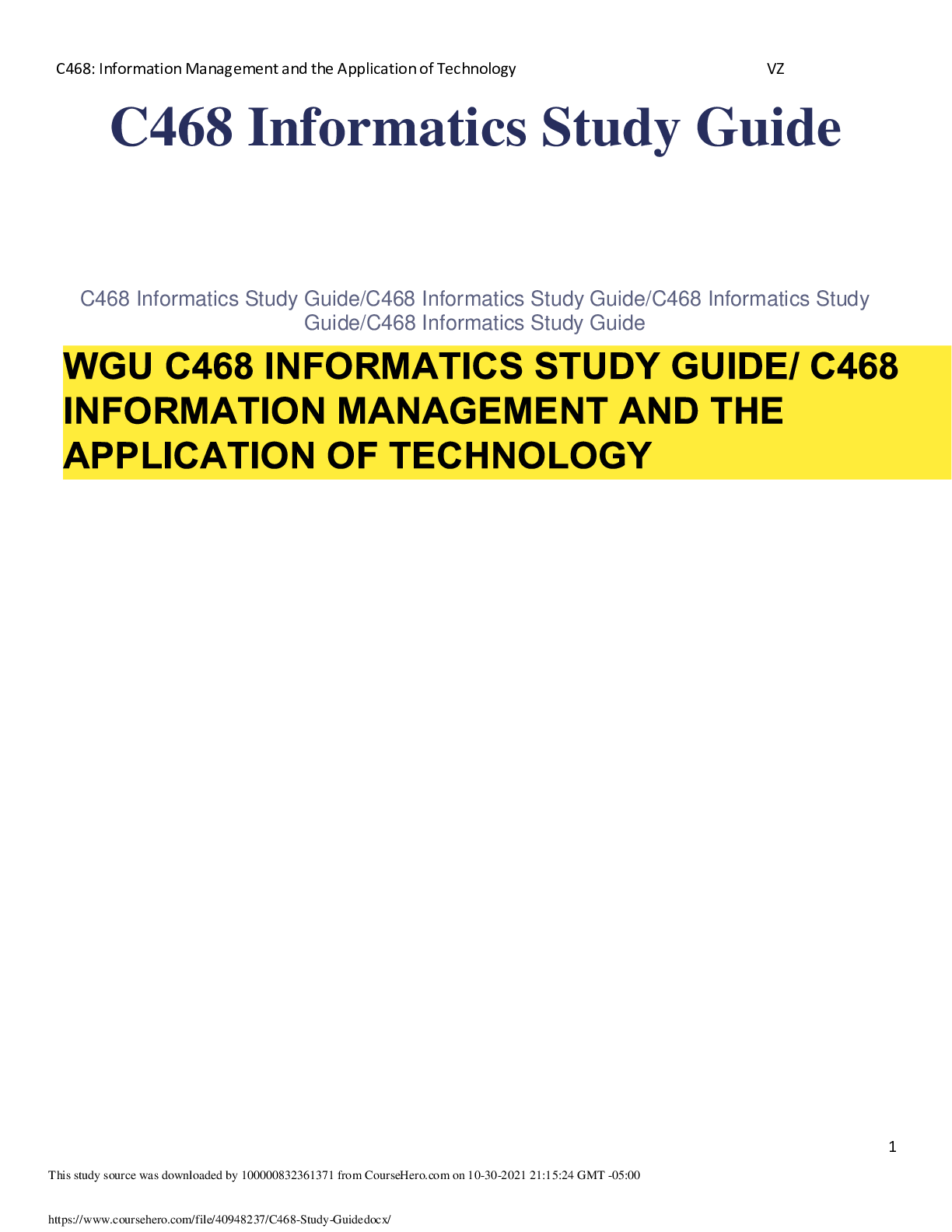
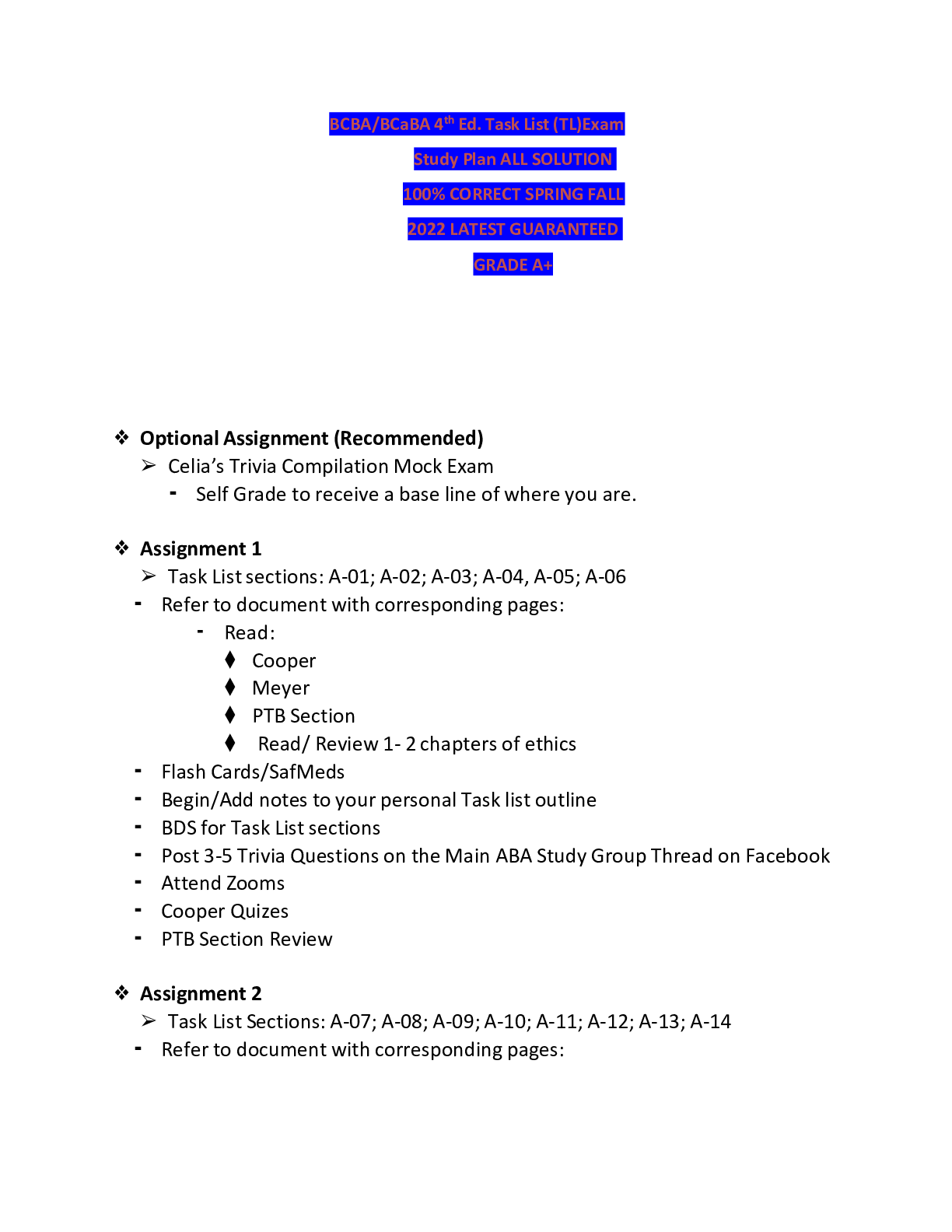
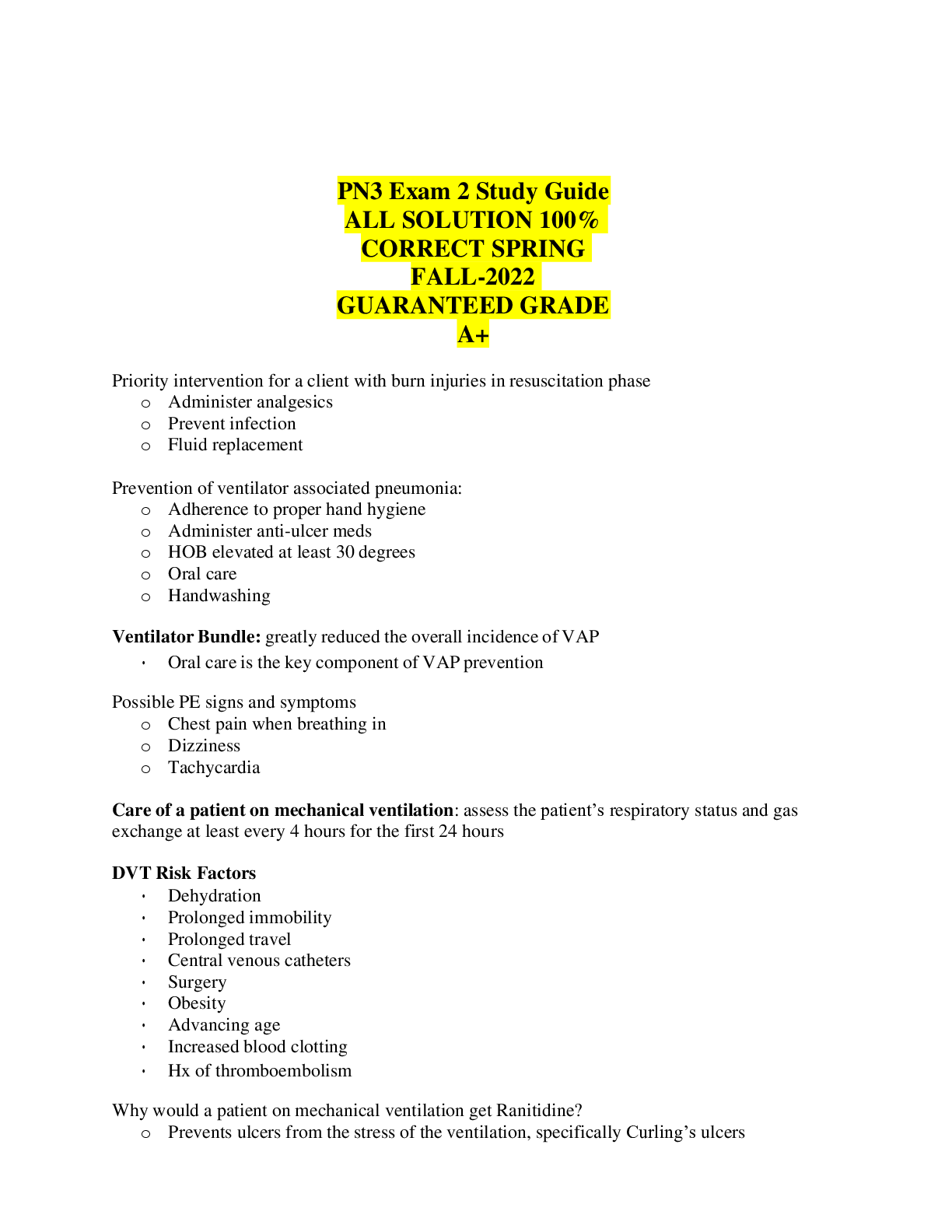
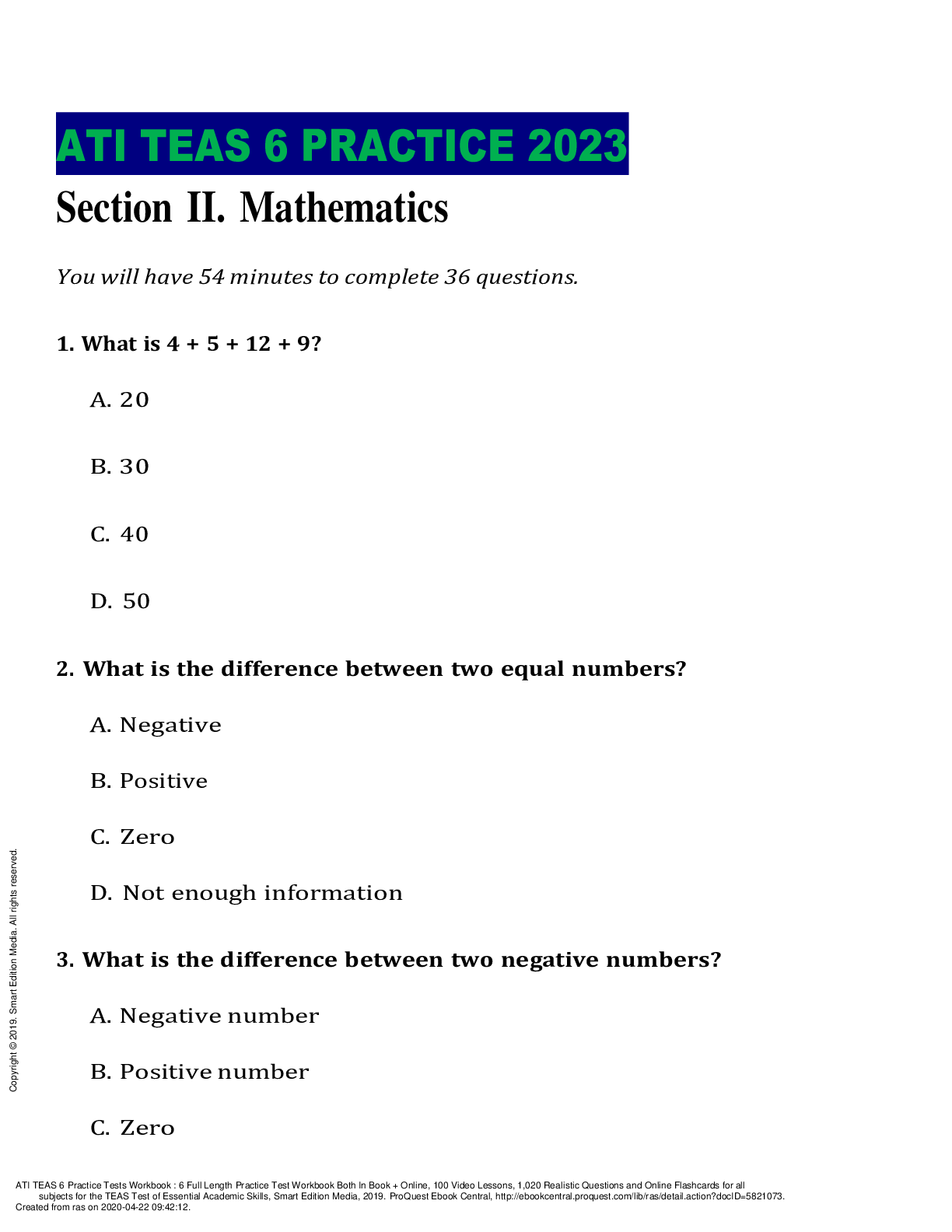
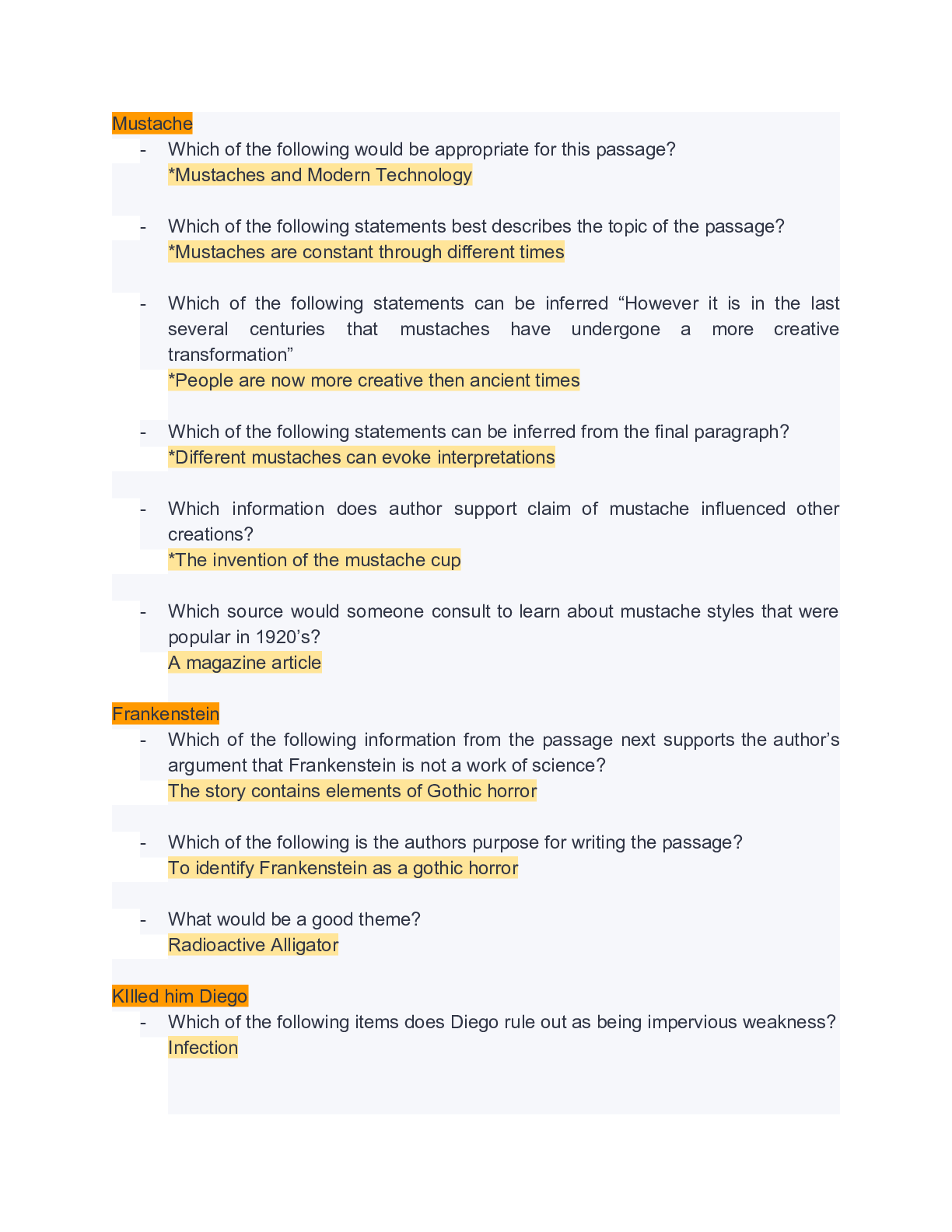
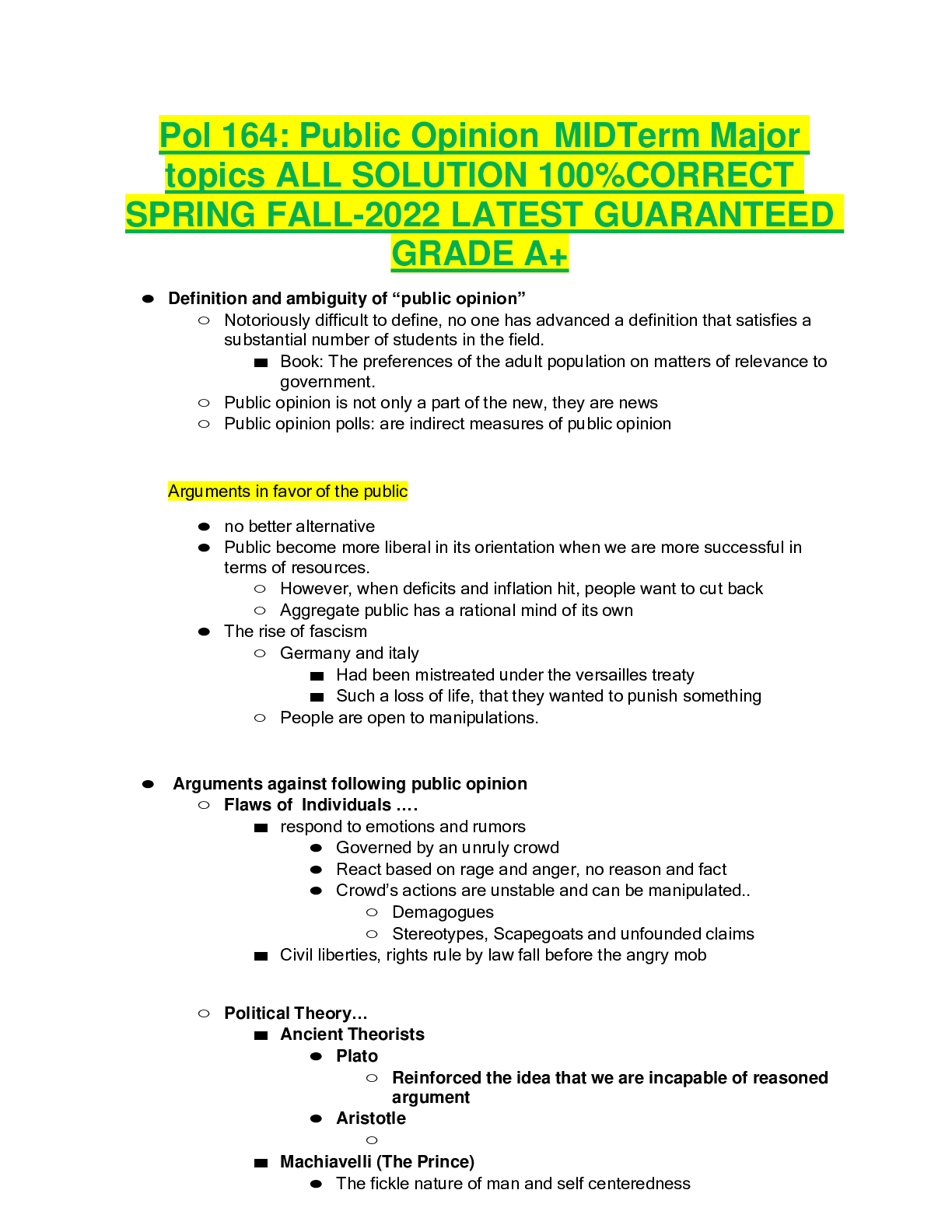
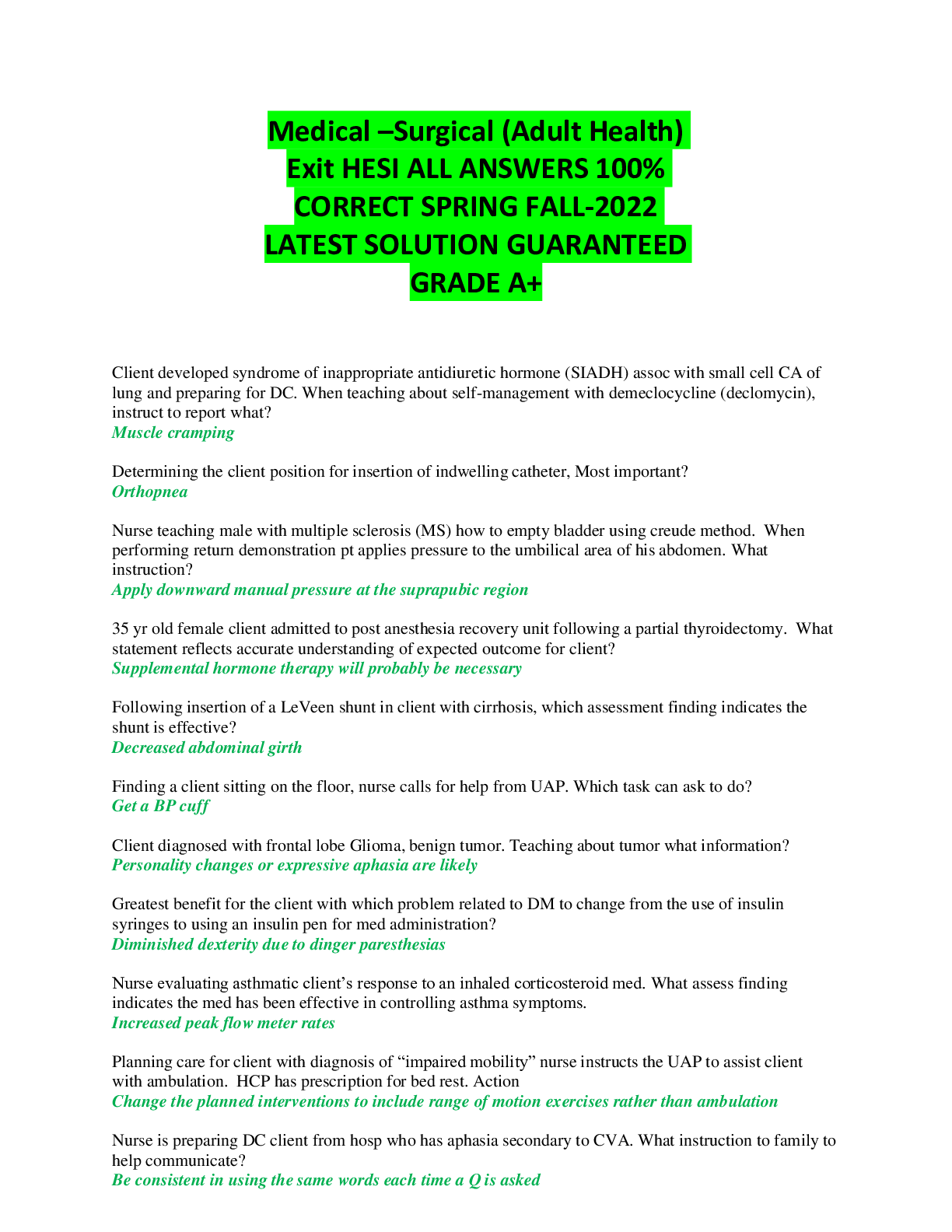

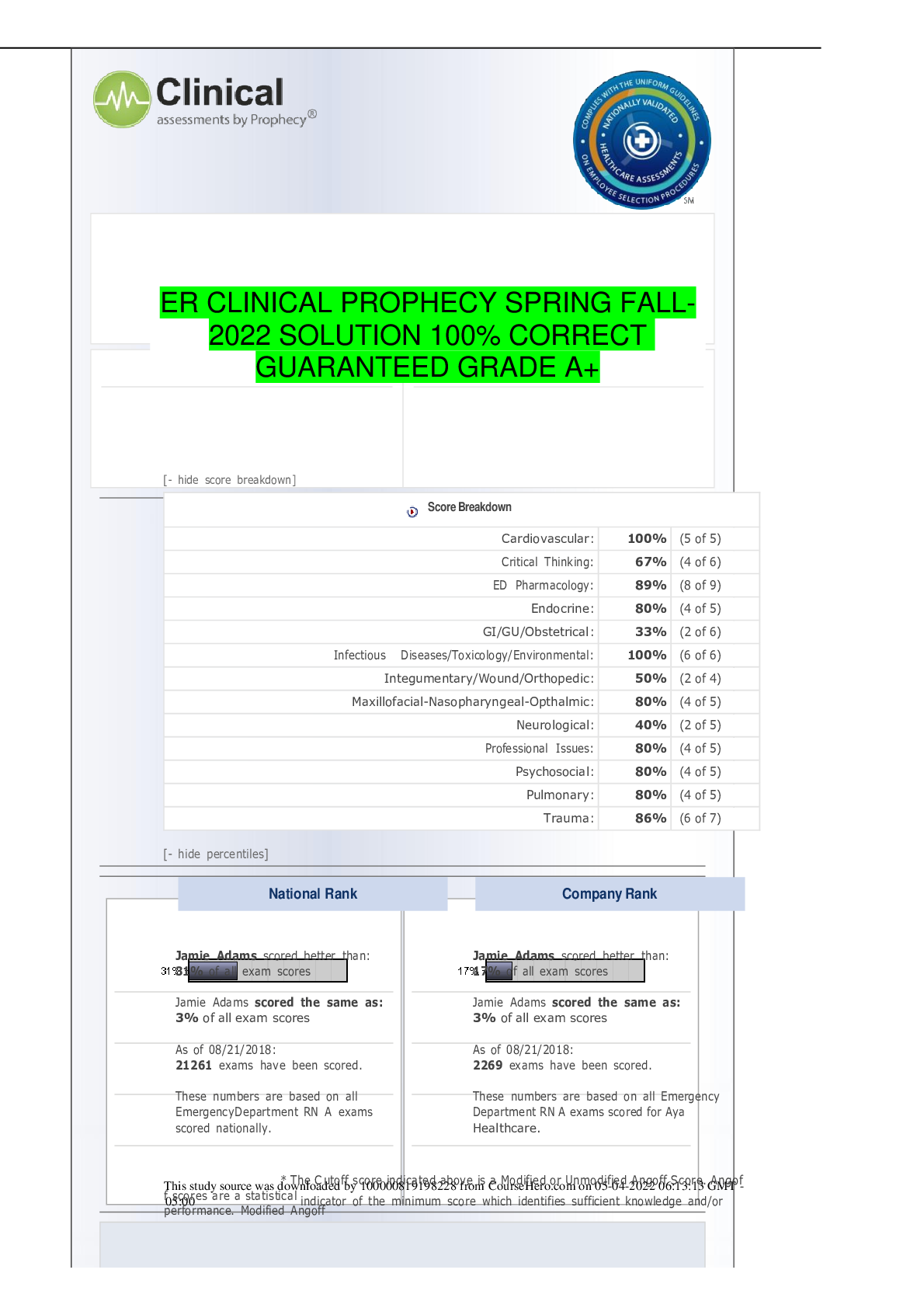
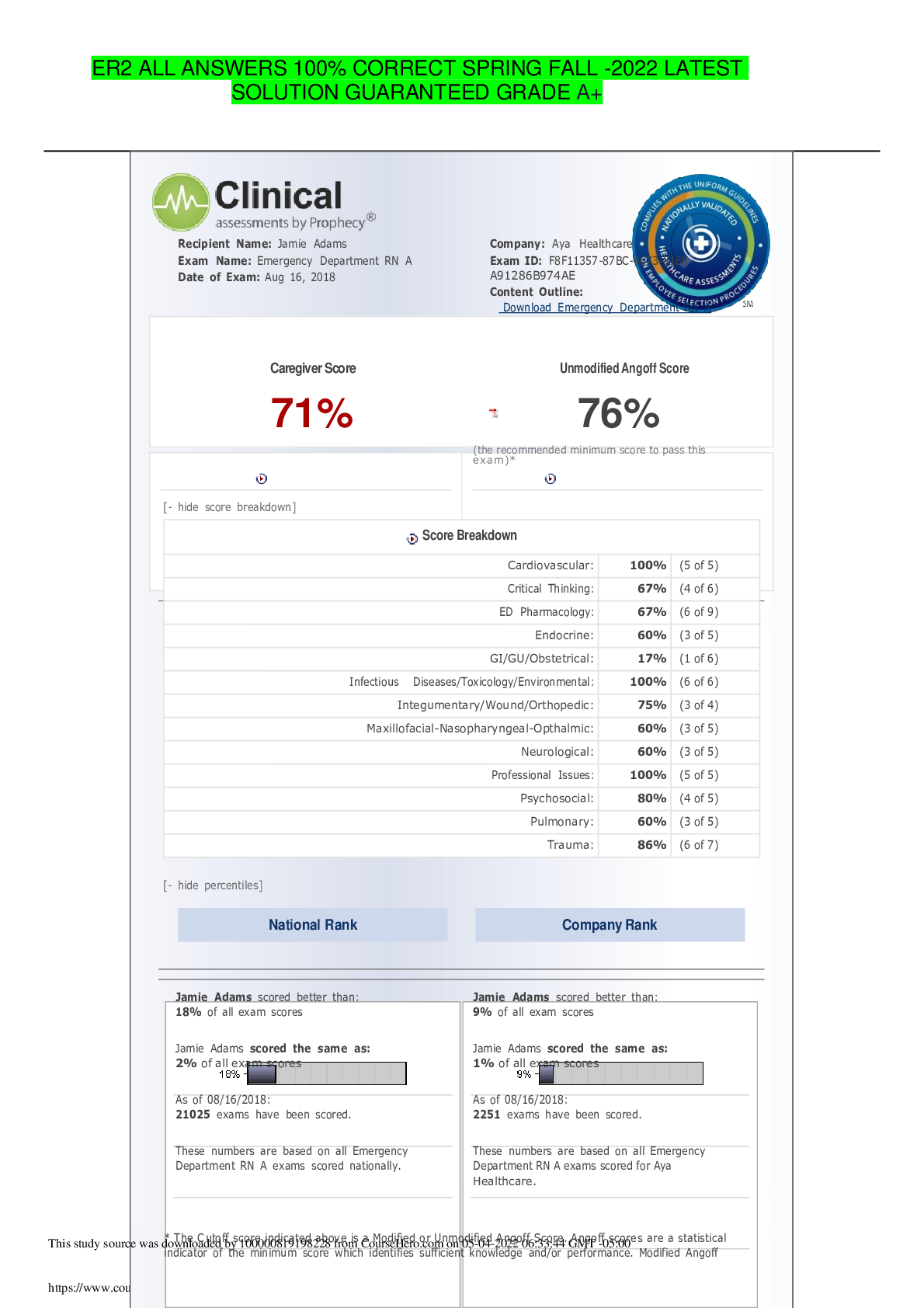
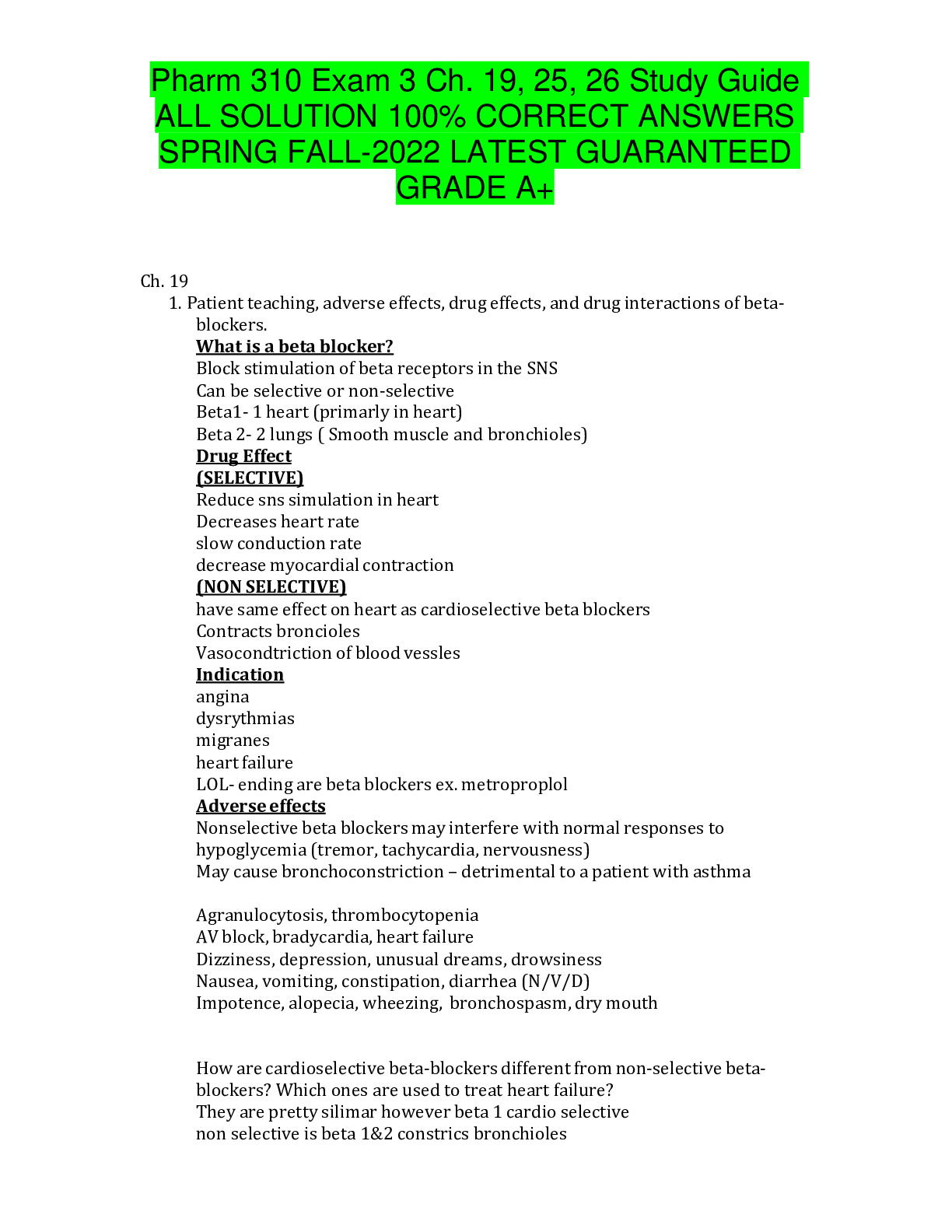

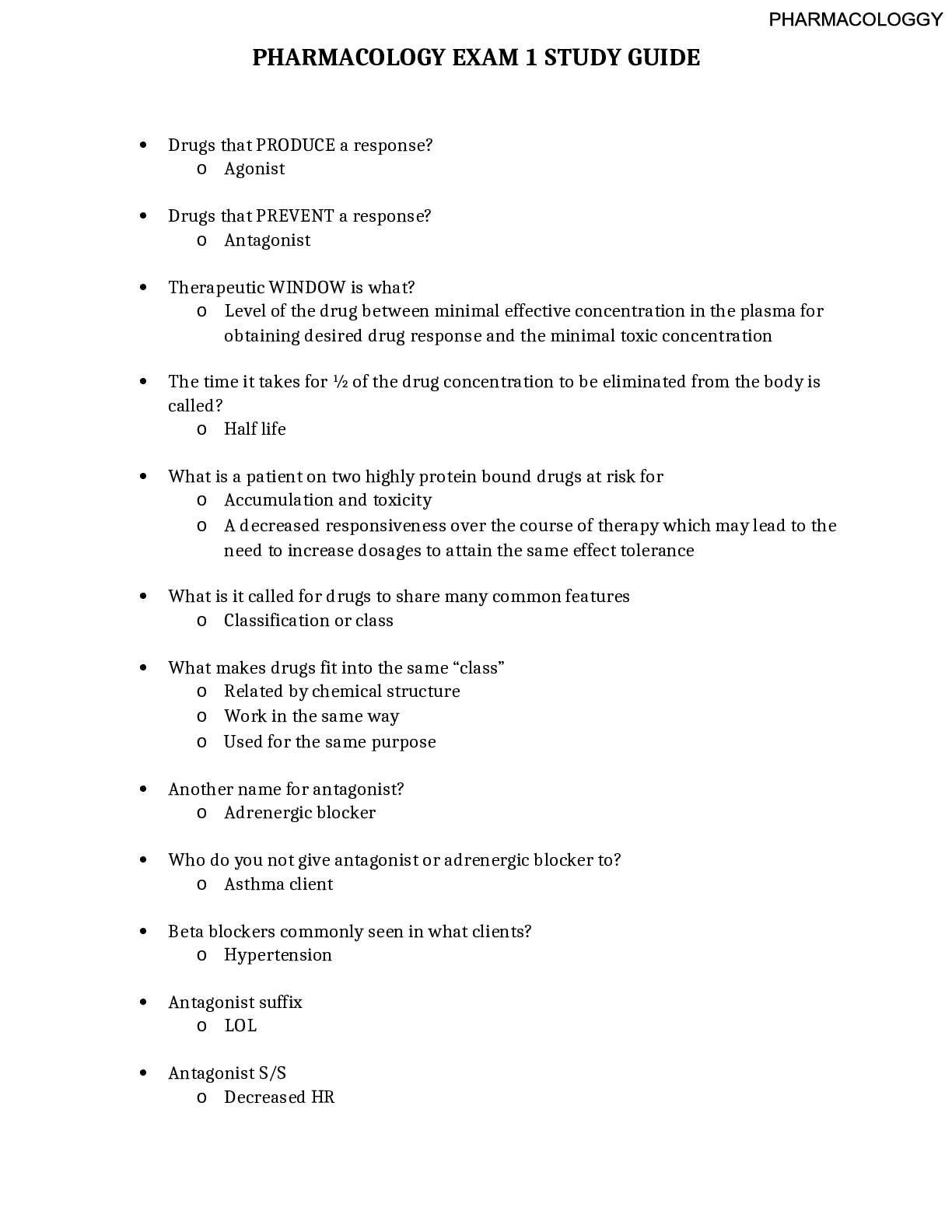
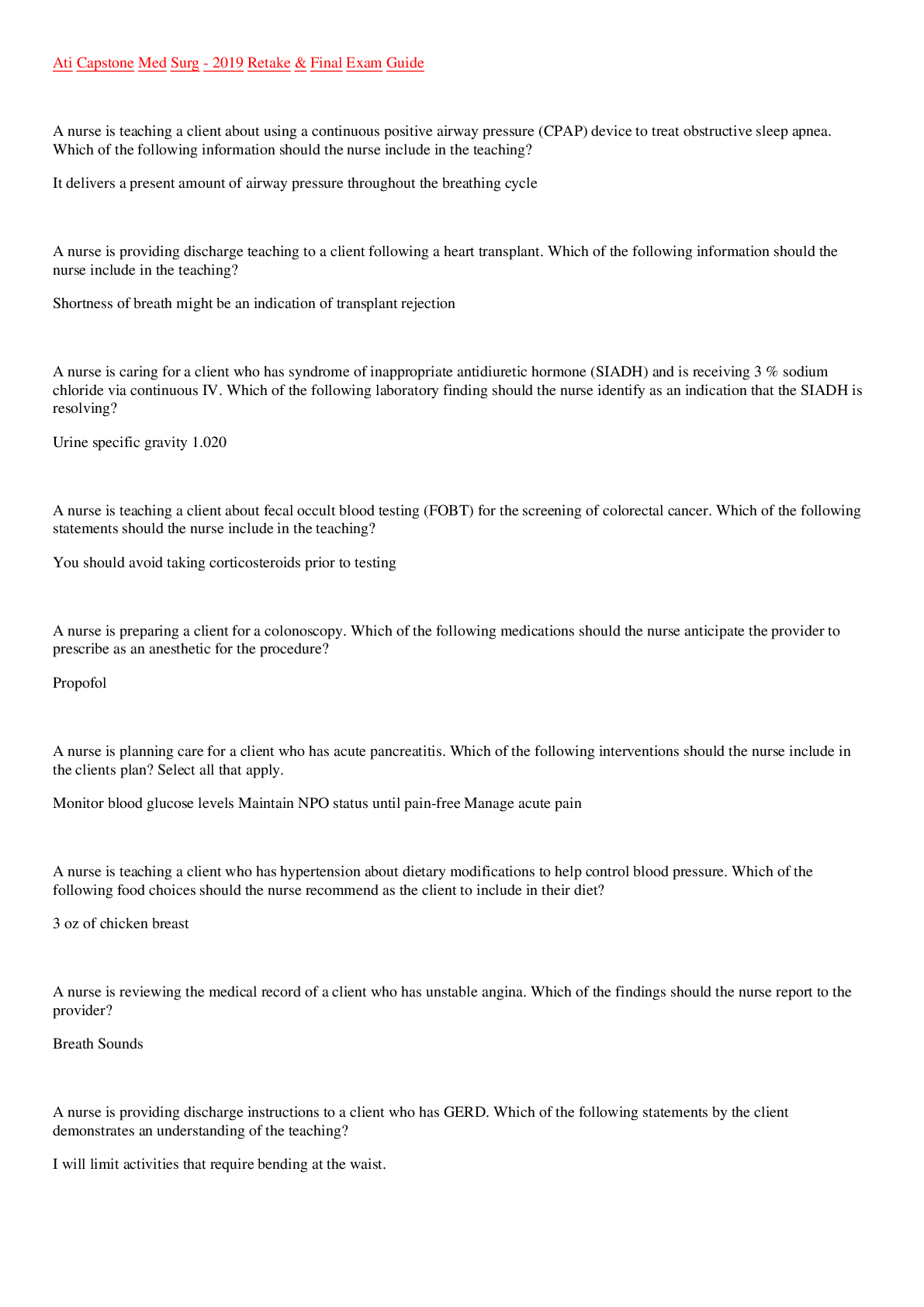
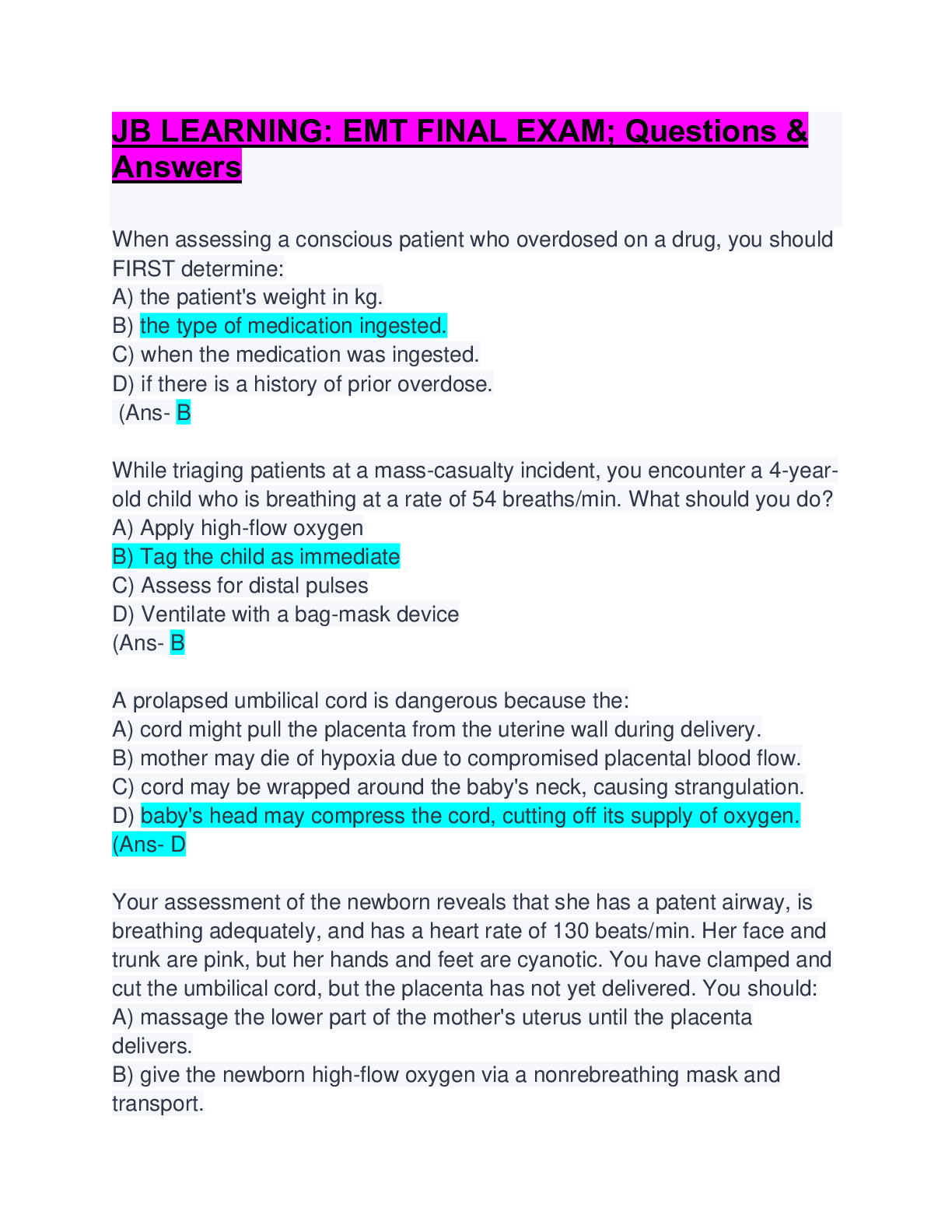

.png)
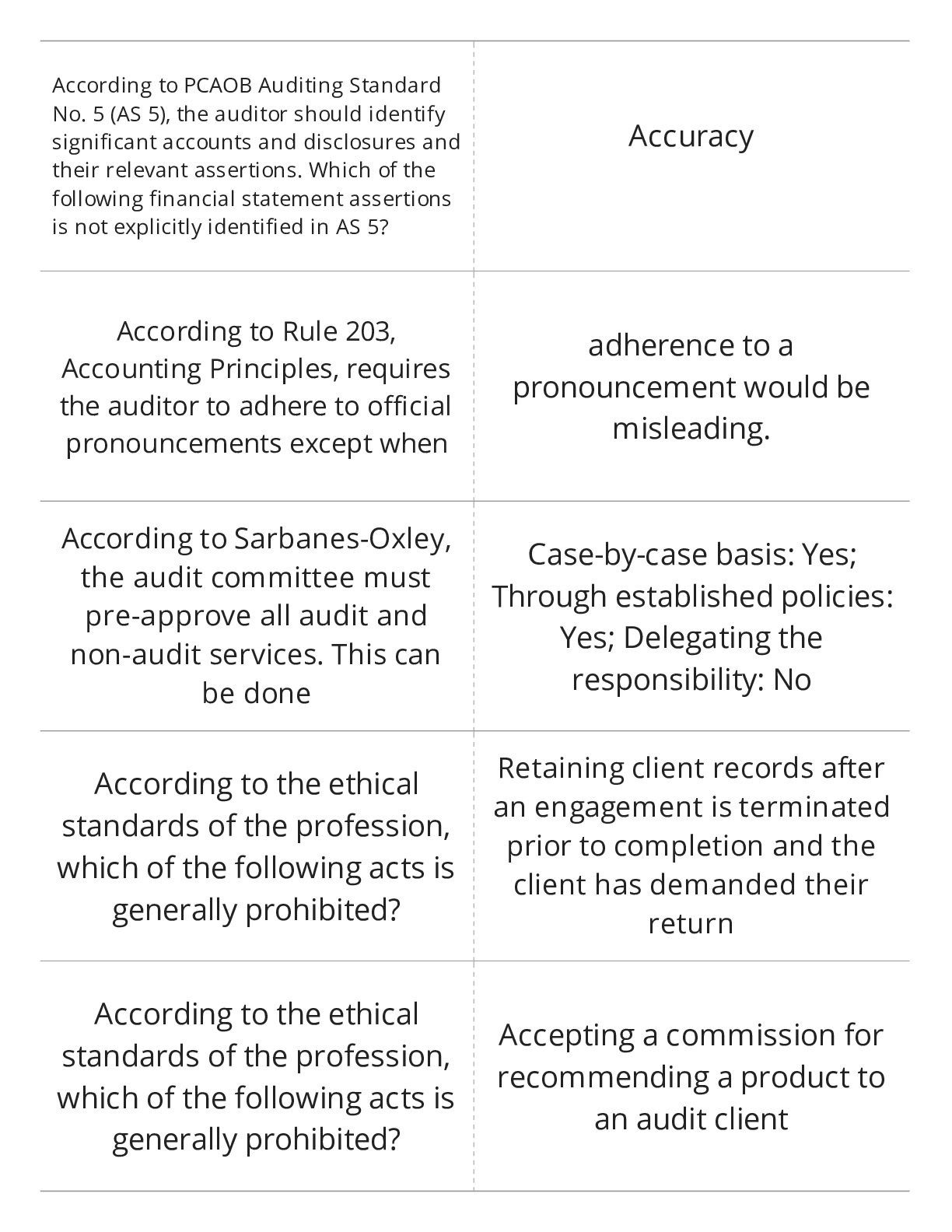
 (1).png)

